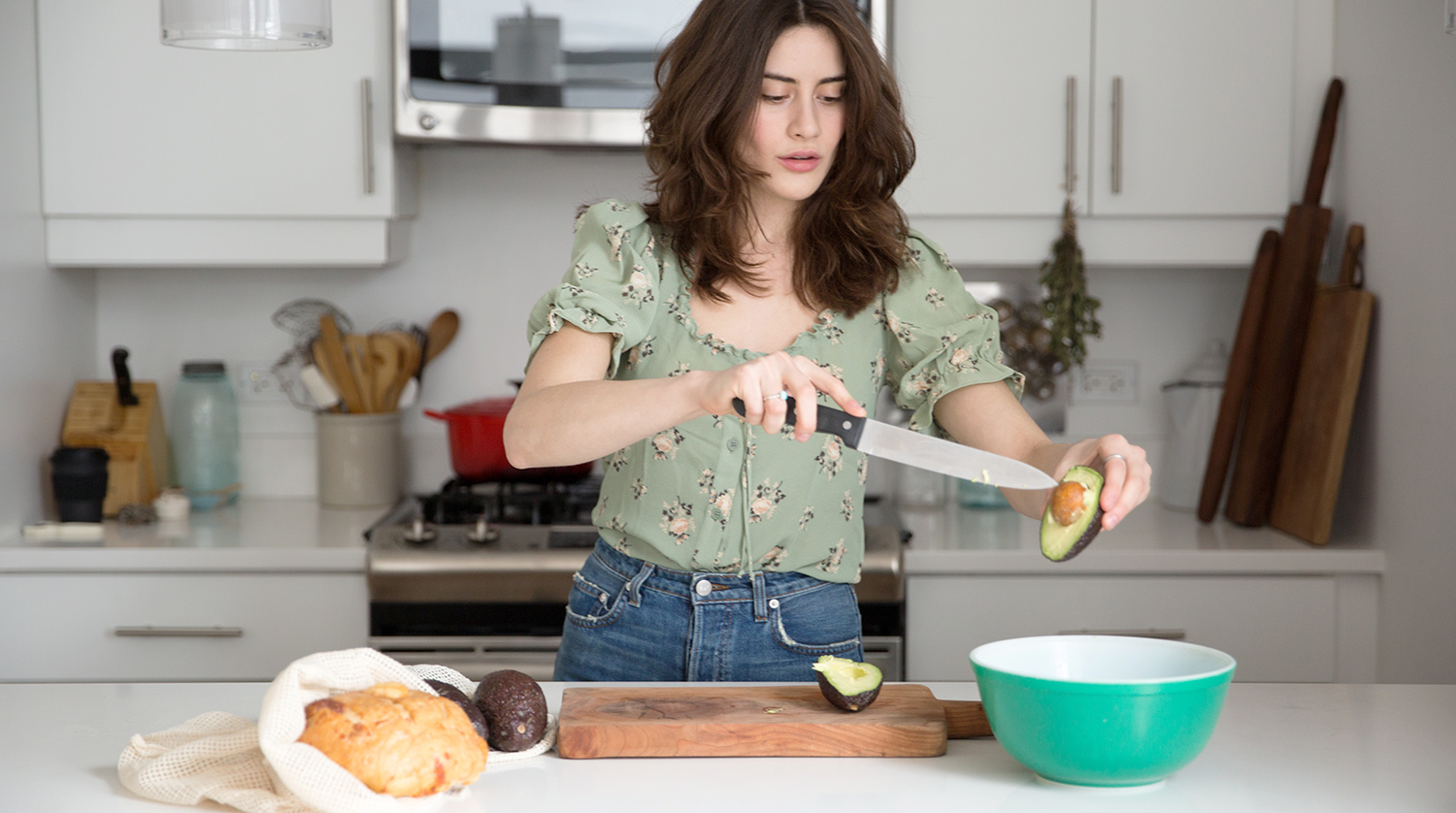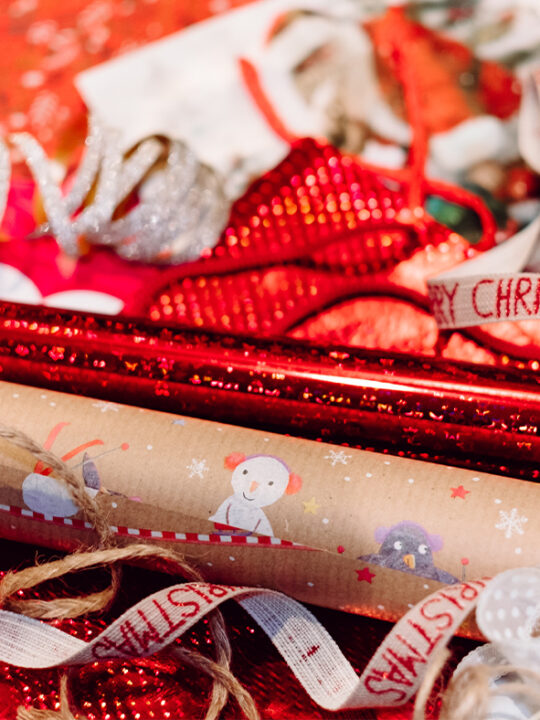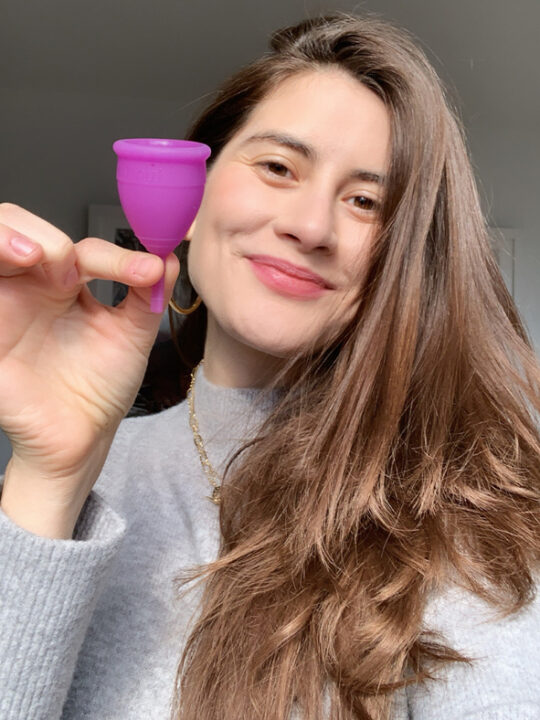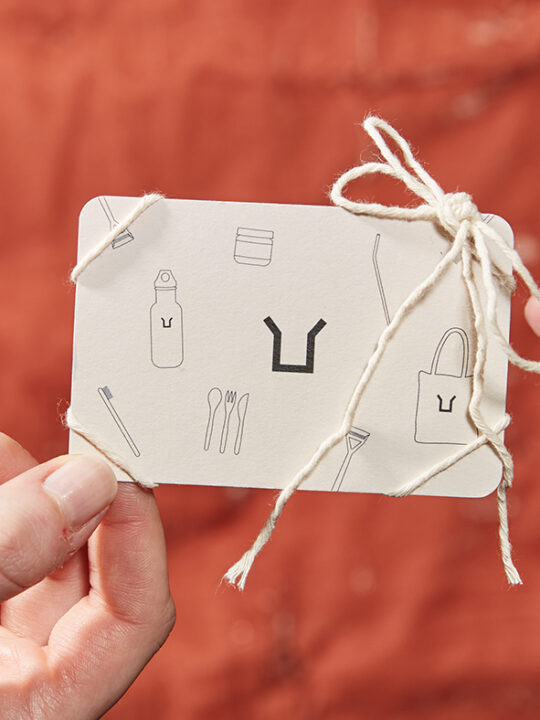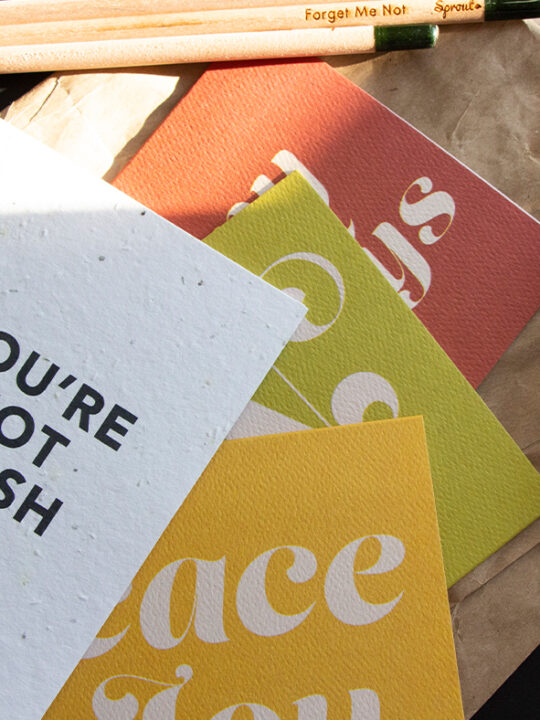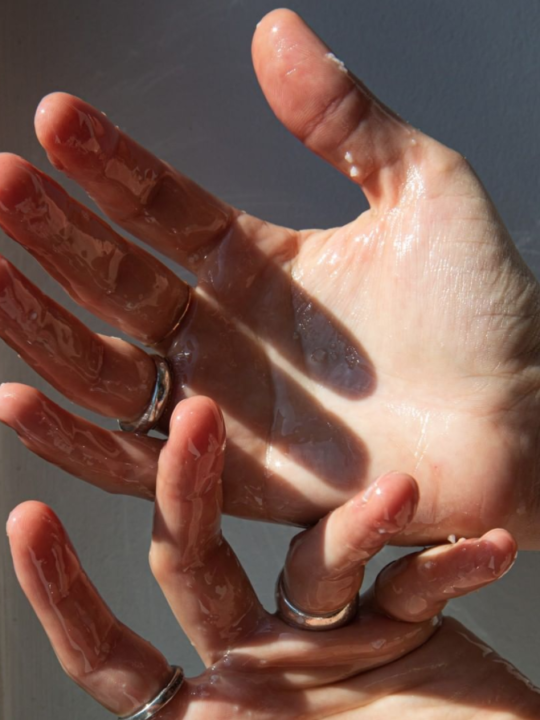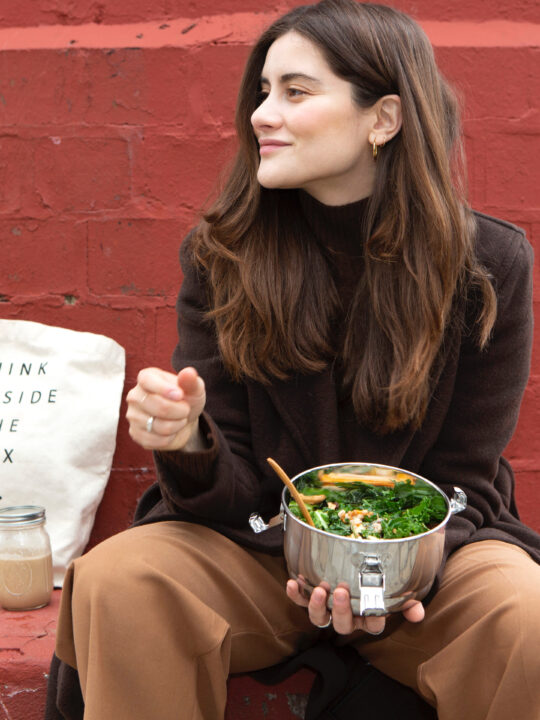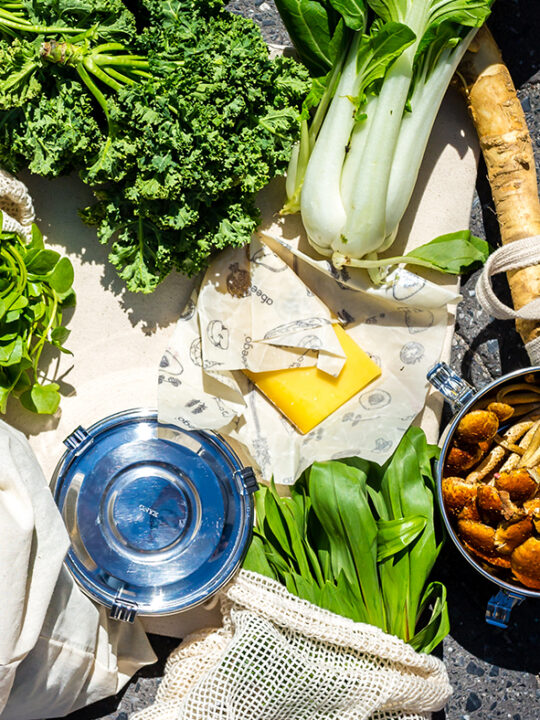1. A Compost
When it comes to kitchen waste, the thing you’re probably throwing out the most is food scraps. In fact, 20% of the US waste stream is food waste. And I know you’re probably thinking “food is biodegradable, so if I throw it into the trash, it’ll end up biodegrading in the landfill anyway, right?” Wrong.
Most landfills are so tightly packed, they create an environment free of oxygen, which makes it very difficult (and sometimes impossible) for items like apple cores and orange peels to biodegrade properly. Instead, these items degrade without oxygen and methane gas is released as a byproduct. Methane is anywhere from 20-150 times more potent of a greenhouse gas than carbon dioxide over a 100 year timeframe (learn more about Methane & The Environment here!), which is why composting is so crucial.
Check out this article to learn how to compost at home (trust me, anyone can do it!), or simply Google “composting near me” to find local compost drop off or pick up locations.
Tip: Keep a big bowl next to you while you cook to toss in stems, seeds, peels, and any food scraps you plan to collect for compost. That way nothing will accidentally get thrown in the trash or down the garbage disposal.
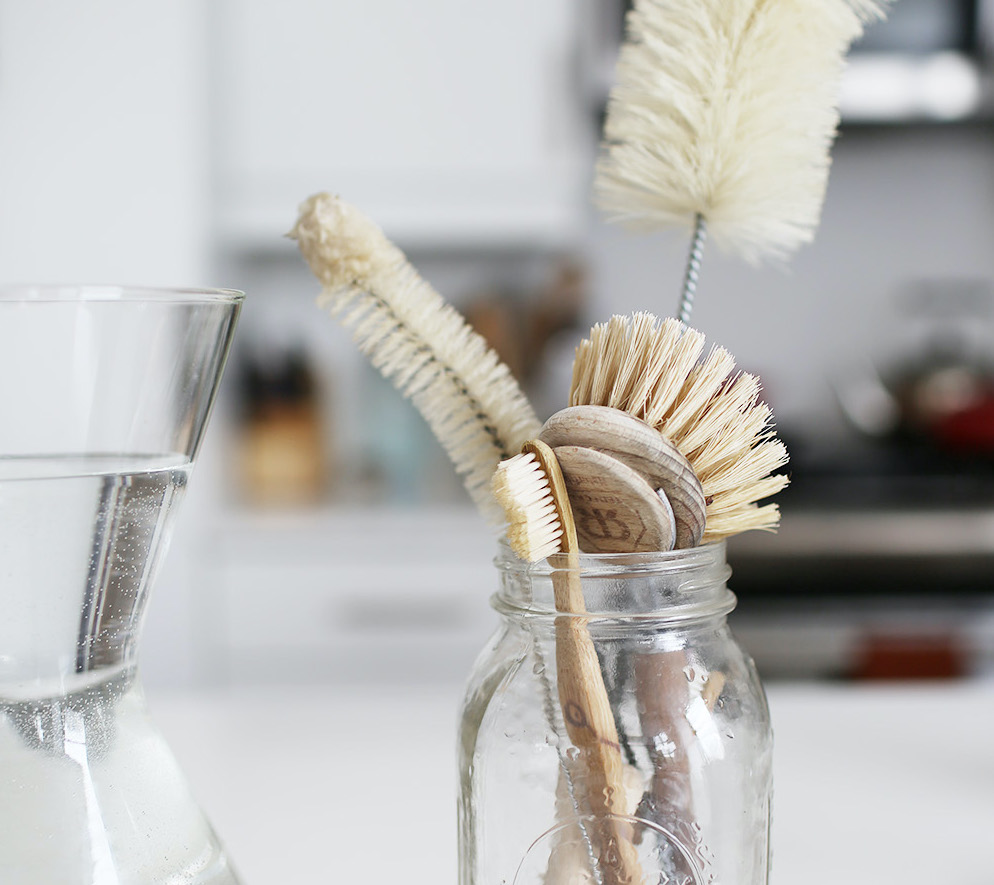
2. Compostable and Recyclable Cleaning Tools
Clean your dishes and kitchen without dirtying the environment! Ditch disposable paper towels and plastic sponges, and opt for reusable towels, copper scrubbers, or compostable wooden dish brushes. And if you’re curious about a nontoxic natural cleaner, check out my 3 Ingredient Homemade Nontoxic Cleaner recipe!
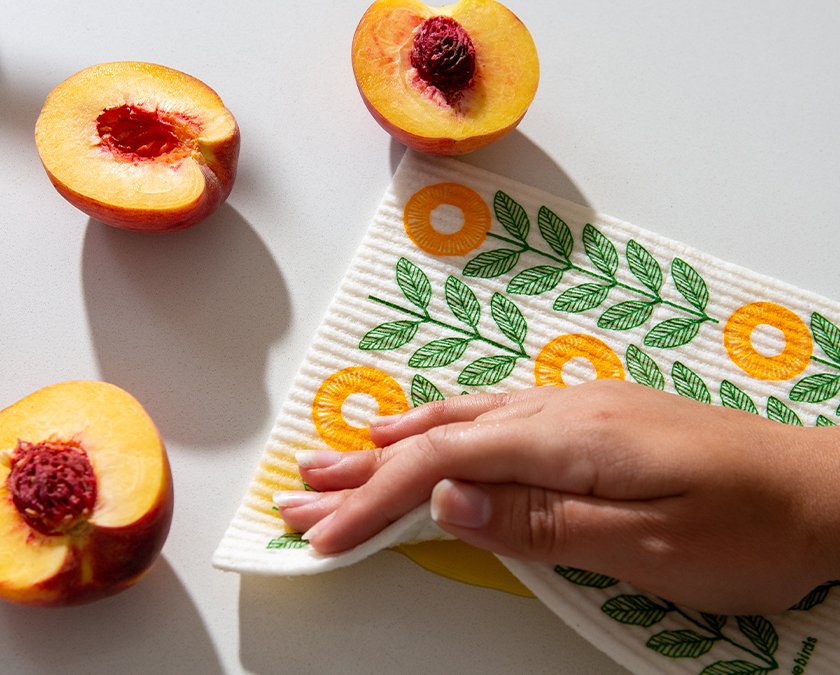
3. Quality Oldfashioned Cookware
Don’t bother with new fangled contraptions such as plastic coated Teflon pans — which are all too easy to ruin and aren’t known for their lifespan. Instead, stick with tried and true cookware such as cast iron pans. Cast irons are straight up baller because they basically last forever and they can double as a weapon if anyone tries something funny in my kitchen. Just sayin’. My cast irons are a hand-me-down from my grandma, but check out the home goods sections in thrift stores for secondhand cast irons and other cooking tools.
4. Reusable Storage Containers
Storing your food right and tight can help extend the life of your food, which cuts down on waste. Avoid containers made from toxic plastic, and instead look for glass, metal, or silicone options.
Tip: If you’re taking your food to-go and intend to microwave later, glass might be a better option, and if you are more concerned about weight, go with the metal or silicone containers.
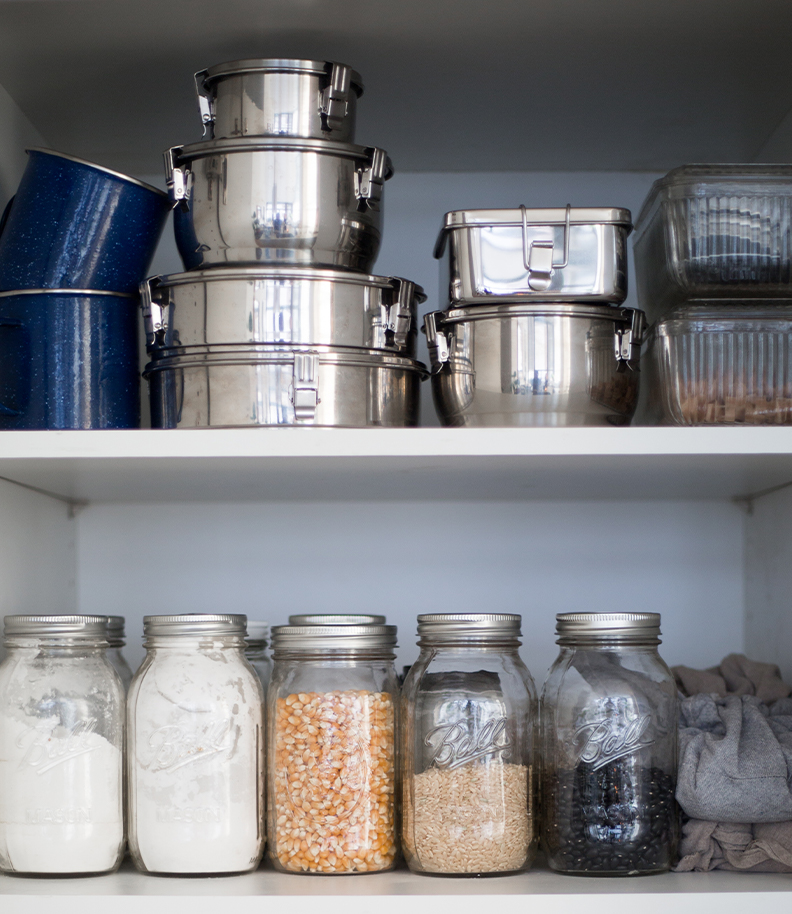
5. A Reusable Coffee Cup
Not only are reusable coffee cups better for the planet, but they also have perks like being spill-proof and keeping your coffee hotter for way longer. Plus, it just tastes better when you’re sipping out of a nice container, I swear. Check out how I make Zero Waste coffee!
Tip: Insulated mugs are also great for keeping drinks, like smoothies and iced coffee, nice and cold!
6. Reusable Straws
Most recycling facilities can’t recycle plastic straws, it’s the 11th most common item found in ocean trash, and in the US we use an estimated 500 million per day. You knew it was coming – if you haven’t already, get on that reusable straw wagon!
7. Jars on jars on jars
Is any Zero Waste kitchen complete without the quintessential mason jar? Jars are great for storing bulk food, bringing food to go, and for keeping leftovers. You can even freeze food in these bad boys — just be sure to leave a few inches of space at the top for frozen expansion!
Tip: Thrift stores are a great place to find mason jars. Otherwise, simply wash and reuse jars from peanut butter, pickles, or spaghetti sauce!
What other tips or hacks do you have for reducing waste in the kitchen? I’d love to know!
About this post’s author: Caylee is a Registered Dietitian-Nutritionist who believes that both the healthiest and tastiest foods take the environment into consideration. With a background in farmers’ markets, local food, urban gardening, and clinical nutrition, she believes that the intersection between sustainability and health is undeniable. More of her work can be found in Instagram at @eat_yer_veggies, and on her website at www.eatyerveggies.com.
